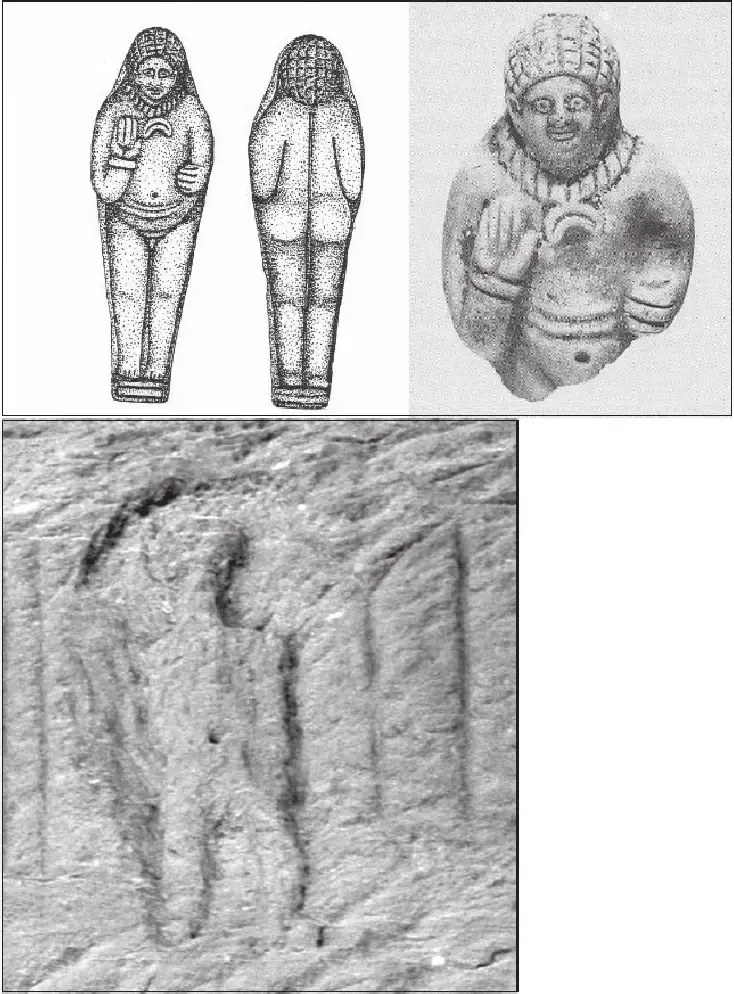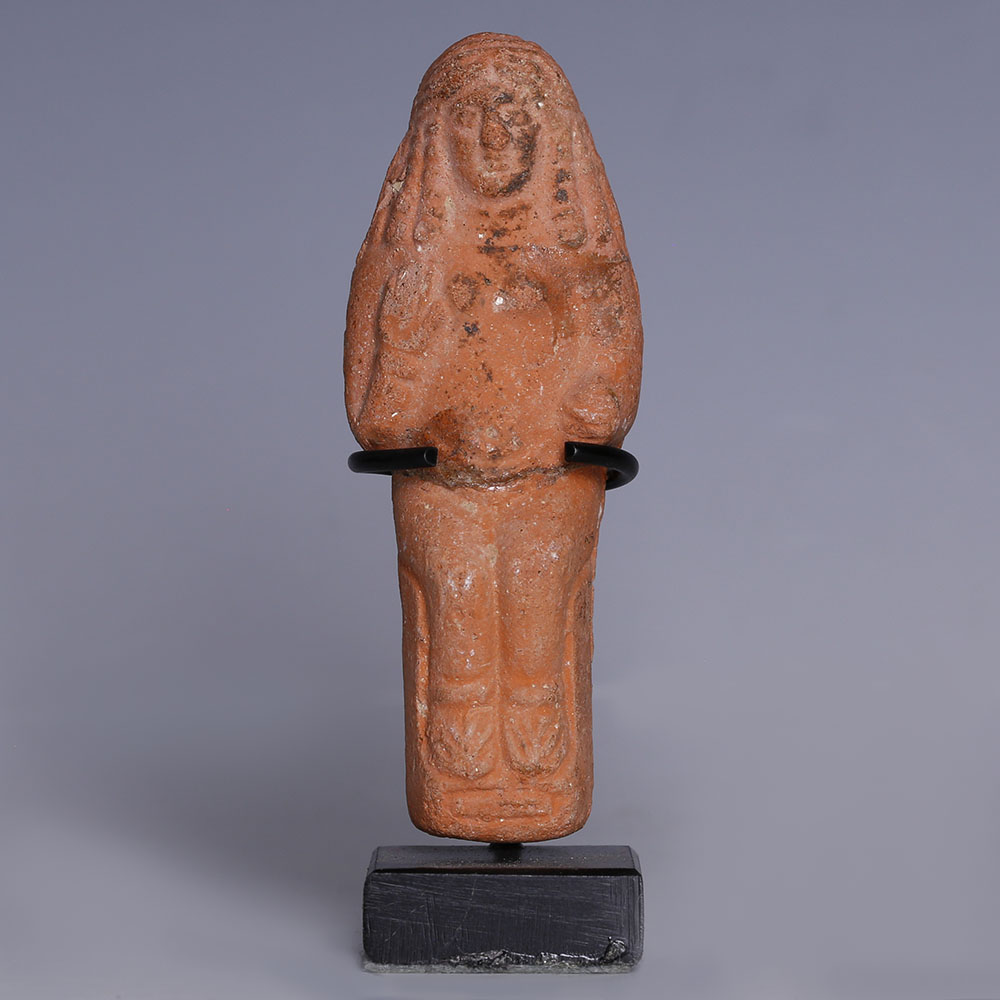A tablet from nineteenth century BC Anatolia mentions a Puzu-Ishtar ‘the Tadmuraean’ (Palmyrene) as witness to a contract. But there are very few references to Tadmur in historical texts until the first century BC, when it grows into a substantial settlement. Because of its central location on the route between Mesopotamia and the Mediterranean, the city was always in danger of being conquered by greater powers. It finally was conquered in 20 AD by Rome. It became thoroughly Romanized getting a senate, magistrates, theatre, colonnaded streets, etc.
When the Sassanians captured the Roman emperor Valerian, Odenathus son of Hairan son of Wahb-Allat son of Nasor, a leading citizen of Palmyra and a Roman senator, stepped into the power vacuum and took up Rome’s cause. He was of mixed Arab-Aramean ancestry. His name, the name of his father, Hairan, and that of his grandfather, Wahb-Allat, are Arabic while Nasor, his great-grandfather, has an Aramaic name. At that point Arabs have been in Palmyra for centuries. They migrated to the city in the later half of the first millennium BC and formed a significant segment of the aristocracy. Two hundred years prior to Odenathus there was Sheikh Zabdibel, who aided the Seleucids in the battle of Raphia and was mentioned as the commander of "the Arabs and neighboring tribes to the number of ten thousands." The Arabs introduced their Gods to the city and built temples and wrote inscriptions in Their honor. This makes Palmyra an important city for understanding Arab polytheism.
Ba'al Hamon and Manawat
Ba'al Hamon was brought to Palmyra from Canaanite lands by Arab tribes. The worship of Canaanite deities among Arabs should not surprise us as the oldest Arabic inscription invokes Malkom and Kemosh and Qos, all Canaanite Gods of the Iron Age. In 89 AD the Arab tribe of the Bene Agrud built a sanctuary in Ba'al Hamon's honor on top of Jebel Muntar giving Him the status of the God of the high place of Palmyra. The inscription commemorating the dedication of the sanctuary consists of three lines:
"To Ba'al Hamon, Moqimu son of Moqimu son of Zabdibol ‘Arima and Yarhibola son of Malku son of Lishamsh son of Hannibel ’A'abai, at their own expense, have erected this sanctuary, and the portico of alabaster which is in front of it, and the portico which is below, and all the ceiling, and its door, and the Srgb’ in bronze. And they have also offered the sanctuary of Manawat and its portico, and all its decoration, for their lives, and the lives of their children and brothers for ever. In the month Iyyar, the year 400 (May, 89 AD)"
Ba'al Hamon was identified with Bel due Babylonian influence. The mountain sanctuary of Ba'al Hamon stood as the dwelling place of Bel on the basis of a parallelism with that of the Mesopotamian God who had a temple on top of the ziggurat and another one at its base. Ba'al Hamon is often paired with Manawat, Goddess of time, fortune, and destiny, though it is not known if They formed a married couple. Manawat was also popular in Hegra, the southern extend of the Nabataean kingdom. Inscriptions tell us that She is a Goddess who appropriates gifts to Her worshipers and presides over chance and luck, like an Arabian Nemesis or Tyche. Ba'al Hamon and Manawat were the Fortunes (Gads) of Bene Agrud.
Ba'al Shamin
The cult of Ba'al Shamin at Palmyra was also brought into the oasis by Arab tribes that came from the Anti-Lebanon or the Hauran. Ba'al Shamin, a weather God, a patron of farmers and shepherds, was adored along the Levantine coast in the second millennium BC, and His cult became the religious patrimony of the Phoenicians in the beginning of the first millennium BC. The epithet Ba‘al Shamin, “Lord of Heaven,” can also be used to denote the supreme God of any local pantheon, such as Dushara among the Nabateans. Lord of Heaven, signifying the God to Whom the heavens belong. Ba'al Shamin is thus neither the Moon God nor the Sun God, but rather the equivalent of the Greek Zeus or the Roman Jupiter. Ba'al Shamin is already mentioned in the first part of the fourteenth century BC in the treaties concluded between Shuppiluliuma, king of the Hittites, and Niqmadu II, king of Ugarit. At the Hittite fortress of Karatepe He heads a list of deities described as "the whole group of the children of the Gods’’ indicating that He presides over the assembly of the Holy Ones. Josephus, writing around 100 AD but quoting from reliable sources preserved in the archives of Tyre, asserts that the cult of Ba'al Shamin was current in that city in the tenth century BC.
A Greek bilingual inscription from Palmyra calls Ba'al Shamin "Zeus Most High and the One who listens to prayers.” This is translated to Aramaic as mare 'alma, "Lord of the World/Eternity” which is translated into Greek as Zeus megystos keraunios "Zeus the Bearer of Thunder." In the Hauran epekoos (who-listens-to-prayer) was an epithet of Ba'al Shamin exclusively. He is styled the “Most High” (hypsistos), an epithet which was translated into Latin as summus exsuperantissimus "the Most Superior" in order to indicate that He was superior to all other divine beings. He is the sixth most invoked deity among Safaitic nomads and there's even an inscription that references the Ba'al Cycle. Ba'al Shamin's cult spread toward the arable lands of Syria, and His preeminence as a supreme weather God was acknowledged in the Hauran and in the Anti-Lebanon by Arab tribes. It is from these buffer zones between the coast and the Syrian Desert that the cult of Baal Shamin reached Palmyra. The tribe of the Bene Maazin seem to have owned the temple of Ba'al Shamin. In 62 AD a member of the Bene Maazin offered an altar to Ba'al Shamin, Durahlun (dwrhlwn), Rahim (rhm), and the Gad (gd) of Yedi'ebel. Greek bilingual inscriptions identify Ba'al Shamin and Durahlun with Zeus implying that They weren't separate entities.
Ten out of nineteen inscriptions found in the temple of Ba'al Shamin mention His name followed by that of Durahlun, which most probably means Du-Rahlun, i.e. “the One of Rahle.” Durahlun would have been the supreme God of the region of Rahle, on Mt. Hermon. The earliest inscriptions from the temple of Ba'al Shamin call Him and Durahlun "the Good Gods" and "the Good and Bountiful Gods." This association of Ba'al Shamin with Durahlun, the tribal God of the Arab group that migrated from the Anti-Lebanon to Palmyra, indicates that the God of the Rahle region had been accepted by the priests of Ba'al Shamin because He was thought to be a sort of "avatar" of the Lord of Heaven. Before migrating to Palmyra the Arabs tribes must've been influenced by the religious traditions of the Phoenicians and the association at Palmyra of Ba'al Shamin with the God of Rahle, on the Hermon, is a remnant of this. Ba'al Shamin also has angels. Inscriptions mention the “Holy Brothers” or “Holy Angels” of Ba'al Shamin, Malakbel and Aglibol. This triad echoes an Aramaic inscription from about the fifth century BC, found in Cilicia, which invokes Ba'al Shamin, “the great,” the Moon/Dawn God Shahr, and the Sun God Shamash.
Shamash
Shamash is the God of the Sun, justice, and oracles. In ancient Mesopotamia He committed law to kings, guided living creatures rightly, bore witness to oaths and is called is called the Lord of Oracular Decisions. The earliest reference connecting Shamash with the Arabs comes from the Iron Age. After revolting Arabs were defeated by the Assyrian king Esarhaddon, their priestess queen, Teelhunu, was forced to settle in Assyria. When Esarhaddon reinstated Hazael as king of Duma, he was willing to return Teelhunu to the Arab monarch in view of her position as priestess. Esarhaddon consulted the oracle of Shamash to learn whether he should return the priestess to her country. The oracle said yes and Teelhunu was allowed to return to Arabia. Its possible that Teelhunu introduced the worship of Shamash to the Arabs after this incident. Shamash was worshiped in the Arab quarter of Palmyra at least since the first century BC. There were two other solar Gods in Palmyra, Yarhibol, Malakbel, but they could not have all been the Sun God. Very likely Shamash alone impersonated the Sun God to the Arab ancestors of the Palmyrenes, Yarhibol and Malakbel having been associated with the sun only by the theological reasoning of priests.
Strabo says of the Nabateans that "they worship the sun, building an altar on top of the house, and pouring libations on it daily and burning frankincense" although mentions of Shamash in Nabataea are rare. Shamash was also worshipped by Arabs living in Hatra and on its coins Hatra presented itself as "Hatra (sacred enclosure/fortress) of the Sun God, Shamash" which suggests that the whole city was dedicated to Shamash. The Hatrene ruler Nasru was even the high priest of Shamash and so were his descendants. This parallels the situation in Emesa where Arab kings acted as priests of the Sun God Elegabal, a God assimilated to Helios in later times. Although Elegabal was worshipped as a mountain God by the original inhabitants of Emesa He became a Sun God after Sampsigeramus ("Shamash has decided") had established his rule there. The cult of the Sun reached its climax under the Roman Emperor Elagabalus, who was of Emesene origin, and had been a priest of the local Elahgabal. The heliolatry propagated by Elagabalus succeeded in merging the cult of the emperors with that of Sol Invictus. Under Aurelianus the cult of the Sun became a state religion. The Arab cult of the Sun which had flourished in many Syrian cities during the Greco-Roman period was transformed by the Roman philosophers, and the Sun became the ever-present image of the intelligible God. This is clearly stated in Julian’s Hymn to King Helios.
Arsu, Azizu and Mun'im
Another city where the cult of the Sun God excelled was Edessa. Here, the traditional cult of Sin, the Moon God of Harran, had prevailed ever since the beginning of the first millennium BC. In the early centuries AD Sin is still called "Lord of the Gods” but the increasing influence of the solar theology had already engulfed the Edessenes, for when Emperor Julian delivered his oration on Helios at Antioch he said that the Edessenes worshiped the Sun flanked by Azizos and Monimos, two deities to be identified with Ares and Hermes, according to Iamblichus. Thus Monimos is the planet Mercury, whereas Azizos is Mars. Azizos comes from the Arabic Azizu ’’the strong one” while Monimos comes from Mun'im "the favorable one." A tradition similar to that of Edessa is found in the Hauran. An altar in the Museum of Sweida represents the eagle, symbol of the sun, standing with its wings fully spread on a bust of Azizu. Some scholars believe that in the Hauran, Azizu and Mun'im stood for Phosphorus, the Morning Star, and Hesperus, the Evening Star. The Edessean theology may have developed as a result of the popularity that the cult of Helios/Shamash gained in the Levant.
At Palmyra, one relief shows Azizu together with Arsu. They are called the "Good and Bountiful Gods" and Azizu is called "the good and compassionate God." Arsu is seen riding a camel and Azizu a horse. The camel is Arsu’s animal as protector of caravans. The Greeks saw Him as an Ares, the God of war, as shown by a bilingual inscription from the temple of Ba'al Shamin. On some tesserae Arsu is associated with Hermes/Mercury, no doubt in the latter’s role as the patron of merchants. The epithet of Arsu is r'yy’ or r'y' i.e. the one who loves. It must be emphasized that there is only one occasion so far discovered on which Arsu and Azizu are associated at Palmyra, and that on other reliefs and inscriptions each is associated with other deities, or appears alone. There is no evidence of Arsu having a similar relationship to Azizu as Mun'im does, and no evidence of the conflation between Arsu and Mun'im as some earlier scholars have attempted to prove. There is also no evidence of any astral association, either. Just because Arsu was conflated with Ares and associated with Hermes does not mean that Arsu was associated with the planet Mars or the planet Mercury.
Rahim
Rahim was worshiped together with Shamash and Allat in the temple erected in the western quarter of the city. The name Rahim (rhm) is probably related to the attribute rahman, ‘‘the compassionate,” often applied to the Palmyrene Gods. The Quranic epithets of Allah, ar-rahman ar-raheem, ‘‘the Merciful and the Compassionate,” are also good parallels to the Palmyrene name. Rahim may be the epithet given to their God by some Arab tribes of the oasis long before they settled there. The inscriptions show that the devotees of Rahim were also worshipers of Allat. The Bene Maazin and their associates, the Bene Nurbel, excelled in this devotion. The worship of these two deities was essential in the religious life of the Arabs in Palmyra. Rahim is also mentioned in three Safaitic inscriptions and the name also often appears in the Mishnah and the Babylonian Talmud as one of the names of Yahweh.
Jinn?
Some divine beings in Palmyra are frequently called gny', ginnaya, plural ginnayi, namely, genii. This Aramaic term is cognate with the Arabic word jinn, which means "to conceal." The Palmyrene ginnaya may have been conflated with the Latin genius. Greco-Roman writers acknowledged the existence of deities who were tutelaries of people and places. In petitions and oaths Romans often appealed to the "genii” of the persons addressed. The concern of these genii was to take care of human lives and enterprises. The Palmyrenes worshiped Them everywhere and gave Them the epithet šbb' “close,” meaning that the beings were guardians of people. The Palmyrene genii were frequently invoked in pairs. Some scholars believe that certain pairs of divine beings stand for the Roman Dioscuri but there is very little evidence for a cult of Castor and Pollux at Palmyra or in the Palmyrene region. They instead probably have Semitic roots maybe connected to the Gods of dawn and dusk.
The Palmyrenes acknowledged the genii as protectors of their caravans, their herds, and their desert villages. Camels loaded with all kinds of products were easy prey for bandits. The caravans had to be escorted through the desert and this, the Palmyrenes believed, was the main occupation of the genii. The tutelary entities are consistently portrayed wearing what would be the traditional dress at the time. Reliefs depicting the genii have been found primarily in the wadis and outskirts of Palmyra or in the hamlets that surrounded the oasis in Roman times. Here the Arab tribesmen lived as semi-nomads, which was not the case with the Arabs living in the city itself. In the Roman era the hamlets around Palmyra were not only centers of settled life but also relays for the passing caravans. In this environment the cult of the tutelary genii proliferated. They were believed to protect flocks and caravans and therefore shrines were erected in Their honor. The connection between the Palmyrene ginnaya and the later jinn of Islam is unclear.
Abgal and His Companions
The God Abgal is often depicted as a youth with long hair and mustache, wearing the local costume while holding a lance. Sometimes He is riding a horse with a bow and quiver. An inscription from Khirbet Semrin indicates that Yarhibol had placed Abgal in charge of the village: "Let Abgal, His brothers, and the members of His house be remembered by Yarhibol who gave Abgal authority over this locality forever. Let whoever fears Abgal be remembered." Abgal had a Greco-Roman style sanctuary in Khirbet Semrin where He was paired with Ma'nu. Like other pairs such as Ba'al Shamin and Durahlun, or Azizu and Arsu, Abgal and Ma'nu are called "the Good and Bountiful Gods." Abgal is also mentioned with Aglibol, Malakbel, and "the jinn" in the same sanctuary.
In Jebel al-Abiad He is invoked with other deities including Bel, Baal Shamin, Aglibol, Malakbel, Astarte, Nemesis, and Arsu. Worship of Abgal is appears late, in the second and third centuries, and He was not worshipped in the city of Palmyra itself but in satellite villages. This indicates that Abgal is a God of the Syrian steppe. Another indication of this is the fact that Abgal being associated with Aglibol and Malakbel is not common and it is much more common for Him to be associated with other steppe Gods such as Azizos, Ma'anu, Ashar, or Shalman worshipped by nomads and semi-nomads of the Syrian desert. These were all depicted in a very similar style, as warrior Gods with long hair, mustache and weaponry. Often riding a camel or horse. They were also all given the epithet "good and bountiful" and often called gny'. Ma'nu was worshipped with Abgal in His sanctuary but He is much more frequently paired with another deity named Sha'ad(u). Ma'an rides a horse like Arsu while Sha'ad rides a camel like Azizu. Ma'nu's feast was celebrated on the 16th of August. Shalman has a sister, the Goddess Shalmanat. They seem to be identical with the Assyrian Shulman and Shulmanitu.
Gads
Many different Gads were worshipped in Palmyra including tribal Gads such as Gad Taimi and the Gads of cities such as Palmyra and Dura-Europos. They were often depicted as the Goddess Tyche/Fortuna but sometimes also depicted as a male God in native dress. A Gad personified the protection given by a God to specific individuals and groups. Among the Safaitic nomads, the great tribal confederations of Ḍayf and ʿAwīḏ each have their own Gad, but so do outside nations, such as the Nabataeans (Gad-Nabaṭ).
Deities that Require More In-Depth Discussion
I have already written an article on Allat. Its an article I plan on updating/reworking in the future. Shay' Al-Qaum also deserves His own post and there is also much more to be said about Ba'al Shamin and the Gads.
Further Reading:









